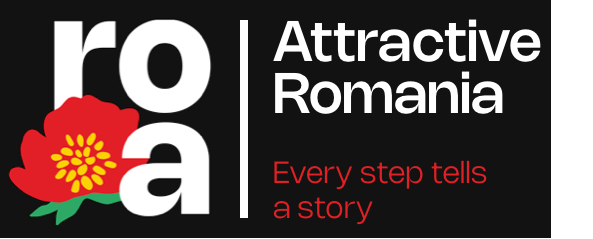

Multicultural Romania: the Roma community
Romania is the country of my dream, which ennobled my soul through the knowledge of the ancestral land.
How time returns, over and over again, in the hourglass of life
Attractive Romania is an European project that, from my point of view, will change the destiny of this country on the tourist map of the world. Romania is a paradise that is worth seeing, tasting and appreciating with the soul and mind of any tourist eager to find interesting places and destinations.
.png?locale=en)
Even a simple stone from the ruin of a Roman castrum reveals the story before the beginning of Dacia hardly conquered by the Romans. An oak branch in the courtyard of a castle, where you have retreated a little tired from the road, opens the window wide so that you are no longer a traveler, but you turn into a charming knight or princess.
The list of 275 objectives could go on with many more, because God has blessed the lands of Romania with all the beauties and riches of His creation. Romania was given to our ancestors, they gave it to us, and we must give it to the children of our children – as the customs of the land were passed down to us, inherited from generation to generation, perpetuating the faith in God, the Romanian ancestral costume and language.
The Roma community: their place on the map vs. their place on the Attractive Romania platform
The Attractive Romania platform talks about all ethnic groups in Romania, but not about the Roma, because they do not have a marked place on the map of Romania. I can proudly say that on the land of Romania, we, the Roma, are in any city, village or commune.
The Roma people are a nation of free people. They are among the first travelers on Earth, and this is the main reason why they are known as nomads. Their love for life and freedom is what best characterizes them. This love is the symbol of the flag that they carry around the world: the blue of the sky, the green of the earth and the wheel of the road.
.png?locale=en)
For the Roma community in Romania, but also for the Roma community around the world, the fact that there is a free digital platform fully translated into their language, through which they discover and learn about the most beautiful touristic, historical, gastronomic areas in Romania, is a decisive step through which the Roma nation reveals and affirms its identity in front of the other peoples of the world.
The use of the Romani language gives an extra note to the affirmation as an international language. The Roma community is proud that their language is heard everywhere, but especially that they can now discover the beauties of Romania and the beauties of the Romani language. The language of the Roma has best preserved its dialect, a dialect that you can also hear through the 275 audio guides that I have put my voice on.
The influence of the Roma community on culture
.png?locale=en)
Over the centuries, no one has tried to understand them or get close to them. Only the great artists of the time came close to their experience and tried to unravel the magic of Roma life and to paint, or to put dance and play on musical notes, to render the language of the air in the spell of art. This is how works that are and will be masterpieces of art were created.
- Literature
History shows us that the story of the Roma has influenced many writers and artists such as: Cervantes, Shakespeare, Rabelais, Moliere, Voltaire, Diderat, Byron, Schiller, Pushkin, Dostoyevsky, Prosper Merimee, Federico Garchia Lorca, Alexander Hardy, Victor Hugo, Dostoyevsky and the list does not stop here.
Romanian writers were also inspired by the Roma people and wrote Shatra (Zaharia Stancu), La Tiganci (Mircea Eliade), Tiganiada (Budai Deleanu), Groapa (Eugen Barbu), Faraonii (Ion Agârbiceanu), but also V. Alecsandri, Mihai Eminescu, Alecu Russo, Costache Negruzzi, I.M. Bujoreanu, O. Goga, Sarmiza Cretzeanu, Tudor Arghezi etc. wrote immortal pages about their way of life.
- Music
Several well-known European composers lived together with the Roma communities and took musical themes from their musical environment, transforming them into well-known classical music works, such as: Weber, Rachmaninov, Bizet, Brahms, Tchaikovsky, Stravinsky, Haydn, Liszt, Ravel, Enescu, Bartok.
Ambassadors of the music that made Romania known in the world: Zavaidoc, Grigoraş Dinicu, Fănică Luca, Maria Lătărețu, Barbu Lăutaru. In fact, the first teachers of Ciprian Porumbescu and G. Enescu were gypsy fiddlers.
.png?locale=en)
- Language
Writers and poets are directly responsible for the language of a people. The Roma have a musical language, full of vowels, that's why when they speak as if they were singing and when they sing no one stands in front of them. Their voice comes from the depths of their hearts to the world of God's creation and the nature in which they grew up.
There are over 20 million Roma in the world, but only 300 Roma writers. The other Roma folks do not speak Romani fluently, or some have forgotten to speak the language. Because there are several Roma folks, after the 1990s, there was an attempt to create a standard language for Roma. Just as in the 1980s there was an attempt to form a language understood by all, Esperanto. But it was not successful. This is the same with the standard language of Roma. The language of writing and speaking of the Roma is and will remain the Romani language of the tinkers, known as the tinker dialect. Because Roma writers belong to this dialect that all Roma peoples understand, the language of Roma remains the language of the tinkers. That is why the Bible was also translated into this Roma dialect.
- Gastronomy
As for the food, the food of the Roma is simple, but it hides a real richness of taste. The traditional food is called sah thai mas (cabbage soup with smoked pork and rice). Other dishes are: rânza (pork tenderloin with spices, smoked), maşo tala o țăsuto (fish under the embers), pui pe sîr a la Lulica (grilled chicken in garlic sauce with baked peppers), romani polenta, săviakul romano (cake), pogăci and pies and many others. The mouth is watering when you talk about them, imagine eating them!
We invite you to the table and to a story by telling you the most beautiful: "Xa Devllesa!" means "Good appetite!", which means "Eat with God!".
.jpg?locale=en)
- Their occupations and daily life
There are many folks of Roma, each name being according to the profession they practice: silversmiths, goldsmiths, tinkers, sieves, woodworkers, horse sellers, gold miners, bear leaders, brush makers, gabor, steady Gypsies, fiddlers, silk gypsies, veneerers, florists, blacksmiths, bone workers, wood processors, etc. Being endowed with these occupations the Roma have always gotten along with the population where they installed their shatra.
.png?locale=en)
The Tinker Roma are different from the other Roma families. Why? Because they distinguished themselves from the others. Their life was simple and free. They were not related or intertwined with the other Roma people. Because of this they best preserved their language, their costume, their traditions and customs, such as the golden shawls that women wore around their necks and the silver coins that braided them in their black hair.
Roma life has always been a journey with the rising sun on the road, towards the setting sun around the earth. Today it is called tourism.
There comes a time in the life of every person when they feel they cannot have full freedom and then, they want to travel and get to know the life of the road in places where their steps have never taken him.
The Roma were born this way, to travel and not to know borders on their way, because their soul is free and belongs to the whole earth. Few of us know what it's like to walk barefoot through snow or freshly mowed grass and sleep under the bare sky looking at the stars, but it's a feeling I encourage you to have.
Now, let yourself be carried away through the lesser-known places and open your soul to find out their stories. Attractive Romania is your guide on an unforgettable journey!

 Sign up with Google
Sign up with Google
